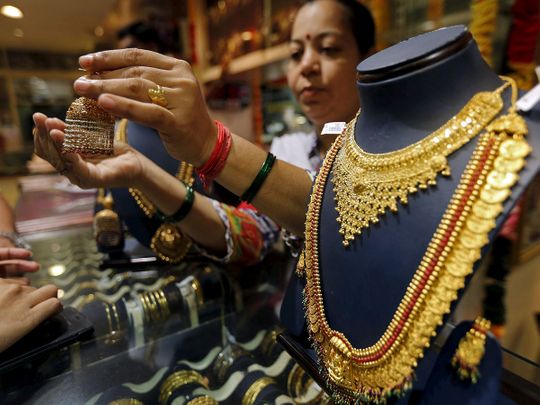
Dubai: It sure did not take long for shoppers the world over to get back to buying gold jewellery – in key markets like India, consumers were intent on more than making up for the dips in 2020.
Demand was up a staggering 60 per cent in the 12 months to end September in India, also helped by gold prices dropping from all-time highs in 2020. Even the second wave of the COVID-19 pandemic did not deter shoppers, as they went straight back to buying in the third quarter after staying indoors during the March to end June period this year, according to the new update from World Gold Council.
The best part is that jewellery retailers in India – many of whom have extensive operations in the UAE – are all suggesting the final weeks of this year will be even better. “Retailers anticipating strong demand during the Q4 wedding and festive season built up their inventories in preparation – and reports suggest that it has indeed got off to a brisk start,” the report notes. (on Thursday (October 28), gold prices in India were at Rs43,880 for 10 grams.)
An early indication will be had on November 4, which is when Diwali is celebrated. This period marks one of the strong points in India’s annual gold and jewellery sales. In the fourth quarter, "a higher number of auspicious wedding days bodes well for jewellery demand for the remainder of the year. But the potential for further waves of Covid, which may require further lockdowns, is an ever-present threat."
“The relatively modest outflows from gold ETFs have had a disproportionate effect on this year’s figures, outweighing positivity almost everywhere else across the board," said Louise Street, Senior Markets Analyst at World Gold Council.
“The rest of the gold market is seeing positive news – not least the strong growth in jewellery and technology demand, especially pleasing because they are at least partially consequences of an overall global economic recovery. Likewise, central banks remain net buyers, and bar and coin investment is growing."
It is all good
“China, India and the Middle East were the centres of growth, although Western markets also saw recovery,” the WGC notes in the report of the nine-month performance for gold in 2021. The UAE jewellery sector recorded fairly strong uptake, of 8 tonnes, in the July to end September phase and with retailers expecting even better turnouts in the final weeks as tourist buyers make a return. (The strong third quarter numbers for UAE reflect buying that happened as a result of momentary weakening of gold prices during July and August. The softening lasted just days, which did dash shoppers’ expectations of more drops for their precious metal.)
In the third quarter, gold averaged $1,790 an ounce, down from Q3-2020’s all-time dollar high - but still above its 3-year, 5-year and 10-year averages.
We expect the full-year picture for gold demand to look very similar - strong consumer and central bank will mitigate losses from ETFs (exchange traded funds). Jewellery demand will continue to exceed last year’s levels, but investment demand in total will be weaker in 2021, despite healthy bar and coin demand.
A lag on 2019
In the year-to-date, global jewellery demand is running at 50 per cent higher than last year, with the biggest market, China, accounting for 157 tonnes in the third quarter alone. But it is when comparisons are drawn to 2019 performance that the gaps keep showing up.
“Q3-21 demand was 6 per cent below Q3 2019 and 12 per cent below the five-year quarterly average,” WGC notes. “Several markets - including Vietnam, Malaysia and Thailand - were disrupted by continued lockdown restrictions. These restrictions not only impacted the strength of the recovery, but also data collection to some degree. As such, demand estimates may be more susceptible than usual to future revisions, once fieldwork is able to resume as normal.”








